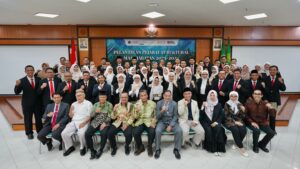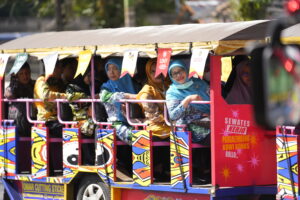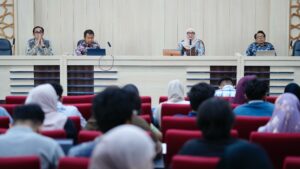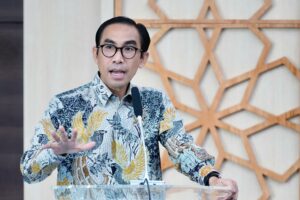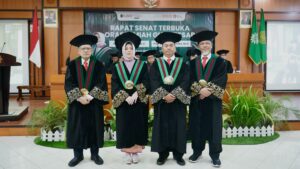Constitutional Court’s (MK) decision of Simultaneous Elections 2019 is considered not to provide obvious format yet. It has not been clear the simultaneous election format, need of legislation alter, and what to prepare. Thus, Indonesia Institute of Sciences (LIPI) through Electoral Research Institute (ERI) recommended that Simultaneous Election 2019 be designed with the model of national and local election.
The simultaneous national election followed by local simultaneous election in regional level is deemed as the most ideal and most likely to carry out in Indonesia. Prof (Ris). Dr. Ikrar Nusa Bhakti, Professor of Research in Political Research Center LIP, explained that simultaneous national elections refer to that the elections of President, DPR, and DPD are conducted simultaneously. It would be continued by simultaneous regional and local elections to elect chairman, vice chairman, and members of DPRD. “On the other word, simultaneous national elections are separated from simultaneous local elections,” elucidated the keynote speaker of public lecture of Governmental Studies of Universitas Muhammadiyah Yogyakarta (UMY). The lecture by the theme of “Design of Simultaneous Elections 2019” took place at meeting hall of Law Faculty UMY on Monday (23/2).
Prof. Ikrar told that simultaneous elections of members of DPRD (Legislative Council) and governor would encourage political parties to cooperate wholeheartedly to win the elections. For one reason, political party cadres being prospective members of DPRD need campaign together with their party. “This circumstance would obviously compel political parties to be unified both pre and post elections. If the parties or governor have bad performance, they would be punished by electors in national elections,” he conveyed.
Moreover, Prof. Ikrar continued, if the election of President together with DPR (the House of Representatives), it would affect the election of legislative members. It refers to the chosen president would be followed by the victory of nominating party coalition. Since he gained entire support of legislative assembly, a phenomenon of divided state could be alleviated. It could also diminish a unique and peculiar phenomenon in Indonesia as governmental parties did not support their own government policy,” he inserted.
The crux is that party coalition espousing a chosen candidate president would tend to maintain the coalition to compete in local elections. “As the result, if national government performs well, local government would be led by candidates encouraged by party coalition dominating national government. Policies of national government could also be carried out in local area. Hierarchical line and governmental coordination would go well,” he asserted.
Furthermore, according to Prof. Ikrar, simultaneous elections through distinguishing local and national elections could provide election organizers space to undertake their duty. The space would decrease their burden and an amount of job. “Besides, distinction of local and national election would offer them occasions to gain information of party candidates as much as possible. Hence, they would be rational in electing,” he uttered.
The political domestic observer mentioned that simultaneous elections is essential to reducing parliamentary practice, minimalizing “Minority President”, creating President legitimation bases in line with political support of DPR-RI, and diminishing horse trading politics between President and DPR. “One of the merits is that governmental effectiveness would elevate since there would be coat-tail effects of level of being elected between president candidates and DPR members of parties or supporting party coalition. Additionally, politic coalition would be established before elections on the basis of similar ideology, vision, and platform. Distinguishing simultaneous national and local elections would bring positive impact on political development on local level, simply the number of parties, create permanent political coalition, alleviate transactional politics, improve quality of national and local politics, and enhance people’s political participation,” he explained.
Therefore, he expected that the ones having business in government, DPR, DPD, and election organizer would comprehend the simultaneous national elections. He also wished that there would be law of simultaneous elections. “The first is that Law of Simultaneous National Elections and the shift in Law of Regional Elections (Pemilukada) to be Simultaneous Local Elections. This Law of Simultaneous Election should have been accomplished in the beginning of 2016,” he said.

